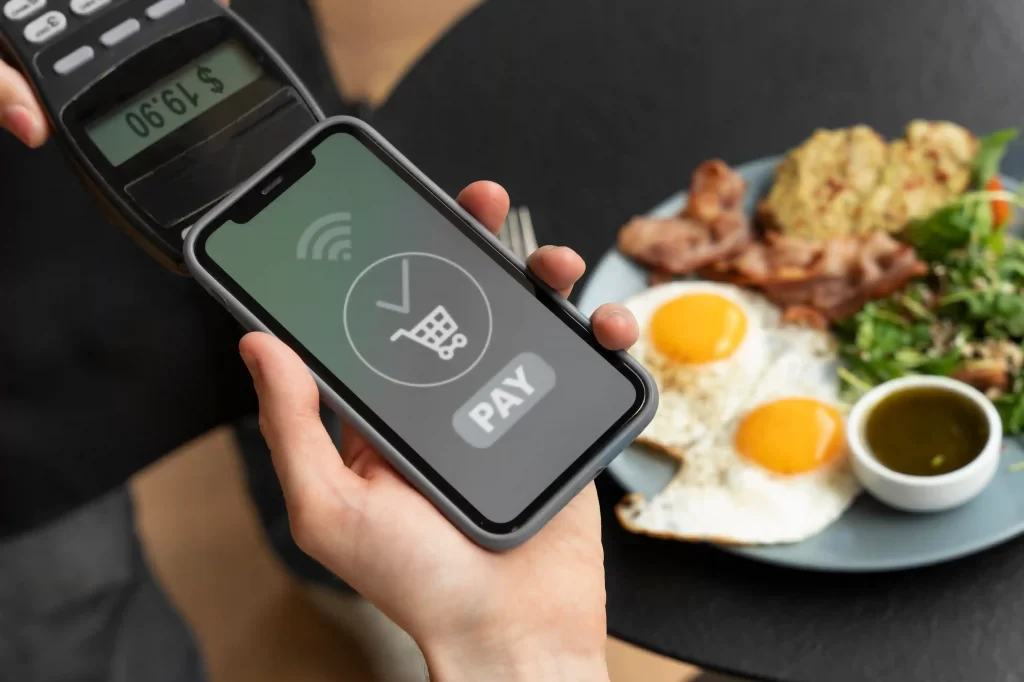Restaurant automation is not merely a fleeting trend, but rather a crucial advancement in the food and beverage industry. As it stands, a significant 76% of restaurants are embracing automation in multiple areas of operation. Given the manifold benefits, such as operational streamlining and enhanced customer service, a majority of restaurant owners are seeking to integrate these innovative systems.

Restaurant Cybersecurity Checklist
In today’s digital landscape, restaurants need to emphasize data protection and cybersecurity. This checklist aids in strengthening digital defenses and ensuring robust POS system vetting. By prioritizing reliability, transparency, and training, eateries can secure their operations confidently.
This guide will cover all you need to know about restaurant automation systems, how they can benefit your restaurant, and how to find the best automation options.
1. Understanding restaurant automation
Restaurant automation is the application of technology to perform various tasks, from the point of ordering to the preparation of food. Essentially, it’s aimed at elevating efficiency and the overall dining experience. The rising demand for swift service and the continuous development of the restaurant automation industry are contributing factors to the widespread adoption of restaurant automation.
2. Why invest in a restaurant automation system?

Investing in automation offers multifaceted benefits:
- Efficiency: Automated restaurant equipment can swiftly process orders, considerably diminishing wait times.
- Accuracy: The precision of automated food machines ensures customers receive exactly what they ordered, eliminating the possibility of errors.
- Cost-saving: Over time, automation can significantly reduce labor costs, proving financially advantageous.
- Innovation: The incorporation of robotics can make your establishment stand out, potentially attracting a wider customer base.
Must Read: An Insightful Guide on Investing in Restaurant Technology
3. How Can Automation Improve Restaurant Operations?
The integration of robots in restaurants is revolutionizing the industry by enhancing various operations. Here’s a summary of the key areas where automation is making a significant impact:
- Automated Delivery:
Delivery has been increasingly popular in recent years, thanks in part to the rise of ghost restaurants and third-party delivery services. Technological advancements in autonomous cars, drone delivery, and other technologies have created several chances for restaurants to upgrade their delivery methods. Businesses may cut delivery times and enhance production by embracing these advancements.
- Automation in Front-of-House Areas:
In general, front-of-house automation aims to streamline the ordering and checkout procedure. Several new technologies have evolved in recent years that allow consumers to purchase, pay, and request service on their own. Some of the most well-known examples of this are:
- Self-service kiosks allow customers to place orders and pay through touch-screen interfaces.
- Tabletop devices in sit-down restaurants facilitate payment, service requests, and entertainment, easing the load on servers.
- Running and bussing robots are being used to deliver food, serve drinks, and assist in cleaning.
- Restaurant Kitchen Automation:
Robots in the kitchen are adept at performing repetitive tasks such as flipping burgers, mixing spices, prepping foods, operating fryers, and maintaining ingredient consistency. While these robots save time and reduce human error, they may not handle troubleshooting or recognize imperfections in food, necessitating human oversight.
These technological advancements in delivery, customer service, and kitchen operations are streamlining restaurant operations, although human supervision remains crucial for quality control and handling complex issues.
4. The rise of automated food service and machines

The rise of automated food service is being driven by technological breakthroughs, the pandemic, labor shortages, economic concerns, and client desires. Technological advances and the pandemic are boosting automated food service. Artificial intelligence (AI) and robotics make operations easier and reduce mistakes in the sector. These technologies help avoid virus transmission by minimizing human contact. They also address labor shortages, allowing human staff to focus on more valuable tasks. Economically, automation proves beneficial in the long run by ensuring consistent quality and reducing waste. Fast-food companies, like McDonald’s and Domino’s, are leading in adopting automation to meet customer demand for fast, efficient services. However, it’s essential to examine automation’s impact on jobs and human roles in the industry.
5. How to choose the right restaurant automation companies
It’s critical to realize that the companies specializing in restaurant automation differ in varying ways. Here are a few considerations to help you make an informed decision:
- Reputation: Firstly, it’s important to read reviews and gather customer feedback.
- Support: Secondly, the availability of excellent customer service and technical support is vital.
- Integration: Lastly, their systems should integrate seamlessly with your existing operations.
6. Challenges and considerations
While automation in restaurants is beneficial, it’s essential to be aware of potential challenges:
- Initial investment: While the initial investment for introducing automated systems might be significant, a well-structured financial strategy can alleviate this difficulty. Investing in automation may provide a quick return on investment (ROI) through better productivity, lower labor costs, and improved customer satisfaction, making it a financially sensible long-term option.
- Training: Staff learning new automated systems may appear overwhelming, but providing thorough and continuing training programs helps ease the transition. Giving employees the information and skills they need to run these technologies may boost job satisfaction and productivity, establishing a pleasant work environment.
- Maintenance: While regular maintenance is required to ensure that automated systems run properly, implementing a proactive and preventative maintenance program can save downtime and extend the life of the equipment. Consistent maintenance can also limit the possibility of unexpected repairs, guaranteeing smooth operations and consistent service quality.
Businesses may fully harness the benefits of automation in the food service sector while avoiding the accompanying problems by tackling these concerns head-on and adopting innovative solutions.
7. The future of automation in the restaurant industry
The current trend of restaurant automation will continue to grow. With advancements in technology and an increase in demand for efficient service, the integration of robots and automated food machines will become even more prevalent.
Conclusion
In conclusion, integrating automation in your restaurant is a worthwhile investment. From streamlining operations to staying ahead of the competition, the benefits are undeniable. Whether you’re exploring restaurant kitchen automation or considering robot food service, the future of dining lies in automation. With the right research and resources, you can make an informed decision to propel your restaurant into the future.








Leave a Reply